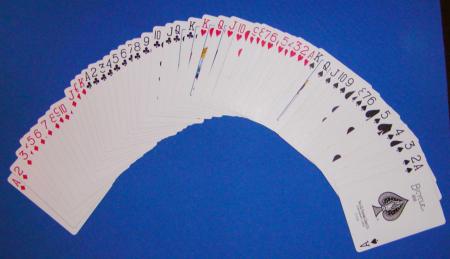Friday, May 15: Bandersnatches
HIDDEN IN PLAIN SIGHT
by Steve Steinbock
 This past week I reread Edgar Allan Poe’s story, “The Purloined Letter.” I’ve heard it argued that all the elements of the modern mystery can be found in the three stories featuring C. Auguste Dupin: locked room murder (“Murders in the Rue Morgue”), armchair detection (“Mystery of Marie Roget”), the clue hidden in plain sight (“The Purloined Letter”), the narrator/foil, the baffled police, and false solutions. I would argue that there’s more to detective fiction than can be found in Poe’s stories. But those three stories did have an amazing influence on what would become the mystery genre.
This past week I reread Edgar Allan Poe’s story, “The Purloined Letter.” I’ve heard it argued that all the elements of the modern mystery can be found in the three stories featuring C. Auguste Dupin: locked room murder (“Murders in the Rue Morgue”), armchair detection (“Mystery of Marie Roget”), the clue hidden in plain sight (“The Purloined Letter”), the narrator/foil, the baffled police, and false solutions. I would argue that there’s more to detective fiction than can be found in Poe’s stories. But those three stories did have an amazing influence on what would become the mystery genre.
I can’t read “The Purloined Letter” without comparing it to Doyle’s Sherlock Holmes story, “A Scandal in Bohemia.” In both stories a member of the aristocratic class faces scandal due to damning proof of an impropriety. (In the Poe story it is a letter, and in the Doyle story it’s a photograph). In both stories the hero is enlisted to retrieve the object, which incidentally has been stolen by a brilliant criminal whose wit matches that of the detective. In both stories, the detective arranges a distraction (a street fight in one story and a fire in the other) in order to swap the object for a duplicate. Dupin is successful. Holmes is not. The Sherlock Holmes story, of course, has one thing that “The Purloined Letter” does not: Irene Adler, an adversary unrivaled in fiction.
During this re-reading, what struck me most was the emphasis Poe put on the game of wits between the thief and the police. Poe devoted several pages to Dupin’s explanation how the thief outsmarted the police by predicting how they would think. He likens it to a child’s guessing game of “even or odd” using marbles.
As much as Arthur Conan Doyle’s story is an outright purloining of Poe’s story, “Scandal” raises the ante by having the great detective outwitted by his own strategy.
Never Odd or Even
Speaking of things hidden in plain sight, and games of odd and even, for the last three years I’ve been searching my attic for a particular magic book that I’d lost. Certain I hadn’t loaned it out, I knew it had to be there. Somewhere. Sure enough, while looking for something else this past week, the book popped out onto my lap.
The book is Redivider, by Phil Goldstein (who performs under the name Max Maven). The entire book is devoted to card strategies based on palindromic stacks (e.g. a packet of cards that runs Ace, two, three, three, two, ace).

A lot of people don’t realize that a new deck of cards, straight out of the box, is arranged like a palindrome. Remove the Jokers and the advertisements, and the deck runs (from the face), Ace of Spades through King of Spades, Ace of Hearts through King of Hearts, then it reverses to King of Clubs through Ace of Clubs, and finally King of Diamonds through Ace of Diamonds. So you’ve got aces on the top and bottom of the deck, and two kings together in the twenty-sixth and twenty-seventh position in the deck.
The tricks are secondary to the clever way that Goldstein put the book together. The title (Redivider), you may have noticed, is a palindrome. Every chapter in the book is titled with a palindrome that appropriately corresponds with the trick discussed in that chapter (“Rotator,” “Word Row,” “Retinue Reuniter,” “No Casino Con is a Con,” etc.). Furthermore, the first and last word of each chapter is a palindrome. Finally, the page numbers of the book run in palindromic order.
(If any readers are wondering what a palindrome is, it is a word or phrase that can be read the same, backwards and forwards. Huh? Wow! Are we not drawn onward to new era? Never odd or even!)
And speaking of things that read the same backwards and forwards, I’d like to wish our commander-in-chief, James Lincoln Warren, a happy birthday one day early as he grows another year younger.




















Great column, Steve, as usual. I love any discussion of Poe’s and Doyle’s stories, as well as your views on magic and wordplay. Always interesting stuff!
As for palindromes, were you aware that Lisa Bonet ate no basil???
To steal a line from an old New York Magazine competition:
A man, a plan, a canal – Suez!
Interesting indeed. The bit about cards reminds me of Al Rogers, a professional gambler from Hammond, Indiana who was my tentmate for a couple of weeks. I wouldn’t have believed it possible for anyone to shuffle a deck in every way imaginable for two minutes without having s single card change position. The downside was having to list them in order before he started shuffling.
The 1970’s t.v. comedy “Quark” had a character named Otto Palindrome (his middle name was “Bob” by the way.) And I read one of Scarne’s books on card tricks when I was a kid but I barely remember anything but the name of the author!
Evil dog was rat on radar; no tar saw God live.
A man, a plan, a canal – Suez!
You realize, of course, that “Suez” is “Zeus” spelled backwards.